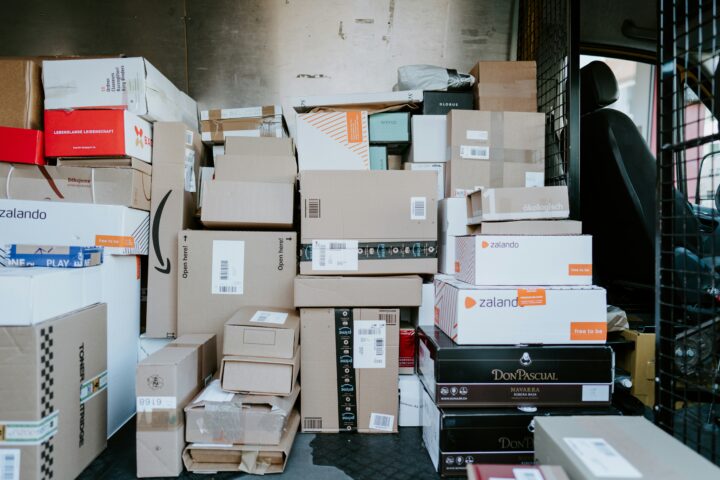
Prepare your small business for the worst-case scenarios – from business liability to data loss – avoid events that could be a disaster for growth or operations
Is your small business capable of surviving a disaster? Have you purchased small business disability insurance yet? As unfortunate as it is, risk is an inherent part of life — it affects all things, including business. That’s why one of the most important aspects of small business ownership is to have a plan in place to cover everything that might go wrong. It may not be the most cheerful of activities, but accounting for risk and knowing how to handle it is key.
Make Sure You Have the Right Insurance
The right insurance policy can save the day when it comes to small business disasters. But, finding the appropriate insurance can be tricky — every business has its own unique insurance needs and no two insurance providers are alike.
Before you call an agent, familiarize yourself with the various types of business insurance policies, as well as which ones are required by law. For instance, the federal government requires all companies with employees to have workers’ compensation, unemployment, and disability insurance. If you have company vehicles, they must be insured under a commercial auto insurance policy. Personal automobile insurance policies will not cover vehicles used for business.
General liability insurance is the most well known and recommended policy for business owners. It covers third-party damages (damage, injuries, or incidents that occur on your property); legal defense costs in the event your company is sued; and damage to your brand’s reputation as a result of libel, slander, or copyright infringement.
Other insurance policies include:
- Product liability insurance: Protects against financial loss as a result of a defective products that cause injury.
- Professional liability insurance: Protects against financial loss as a result of malpractice, errors, and negligence.
- Commercial property insurance: Protects against loss and damage of company property due to a fire, natural disasters, and vandalism.
- Business interruption insurance: Pays for expenses (such as loan payments, rent, employee salaries, and taxes) while a business rebuilds after disaster.
Determining how much insurance coverage you need can be difficult. Start by assessing your risks. Consider what kind of accidents, violent events, or natural disasters could destroy your business. Then, find a reputable licensed insurance agent to help you decide which policies match your business needs. Be sure to shop around as prices and benefits can vary greatly. Finally, reassess your insurance needs every year — as your business grows, so too does risk.
Educate yourself on business insurance types. All firms with employees must have workers’ compensation, unemployment, commercial auto insurance, and disability insurance.
- For example, know what is covered under commercial auto insurance. Commercial auto insurance protects against vehicle-related mishaps for your company, allowing you to relax and enjoy the ride. It covers third-party damages (damage, injuries, or events on your property), first-party damage, towing and rental expenses, and more. Insurance companies like CoverWallet.com offer business insurance to suit your specific needs.
Keep Your Employees Safe
You may not like to think about it, but the cold hard truth is that violence can happen at your business. Since guns are a major factor in workplace violence (and concealed carry is legal in many states) it’s incredibly important to have a written policy dealing with weapons in or around company property.
You should also establish a no tolerance policy regarding workplace violence, including anyone who comes into contact with your employees (such as clients, customers, and vendors). Train your employees to report threats or assaults. To increase safety, consider using carded entrances, buzzer systems (in retail establishments), and providing alarms and safe rooms for use during emergencies. Perform a safety drill every quarter so your employees know what to do and where to go in case of emergency.
Workplace violence isn’t the only safety issue your employees may face. They may be in danger of injury due to use of heavy machinery or hazardous materials. There’s also the chance of fire, flooding, and natural disasters. Make a list of the general hazards employees may encounter in the workplace and then develop an official response plan for safety issues. As with workplace violence, the key is to train employees on all safety and security procedures and drill them often.
Protect Against Data Loss
Most businesses today rely heavily on the use of computers. And where computers are vital, data loss is a threat. Hardware failure, human error, theft, and computer viruses — all can cause loss and all can be costly. Establishing a data loss prevention system is an essential step in protecting your business.
Start with a backup plan. There are three data backup techniques: physical offsite storage, cloud based storage, and backup tapes. It’s best to choose at least two of these options as data stored offsite may be just as susceptible to natural disaster or burglary as it would be in your office. Choosing both an offsite location and cloud based storage is the best way to ensure your data is safe.
Update your data frequently to prevent loss in case the backup becomes corrupted. Depending on your business operations, updates can be done as daily or quarterly as needed. It also doesn’t hurt to periodically test data to ensure it is both viewable and accurate. Finally, extend the data protection plan to include the tablets and smartphones your employees use on the company network by using over-the-air encryption.
Have a Continuity Plan in Place
A continuity plan summarizes the instructions and procedures your company must follow in the event of a disaster. The continuity plan should include the following items:
- Emergency contact information
- Who is on the disaster recovery team
- What systems your business cannot function without
- Where data backups are located
- Backup power arrangements
- An alternative communication strategy
- An alternative site of operations
- Essential equipment and how to move it
- A recovery plan
Keep your business continuity plan as current and accurate as possible. Test the plan regularly by either talking it out (beginning to end) or doing a full run-through. Continually improve the plan and keep staff up to date through training and testing activities.
Success during and after a disaster often comes down to how well you’ve planned. With risks ranging from natural disasters to human error, it’s absolutely crucial you prepare for anything (and everything) that may come your way. As they say, an ounce of prevention is worth a pound of cure — and in the business world, it could be the difference between failure and prosperity.



